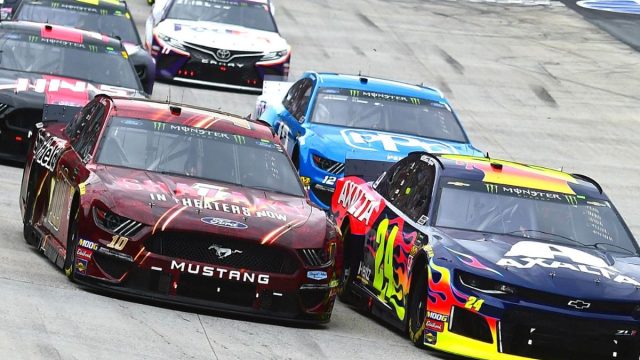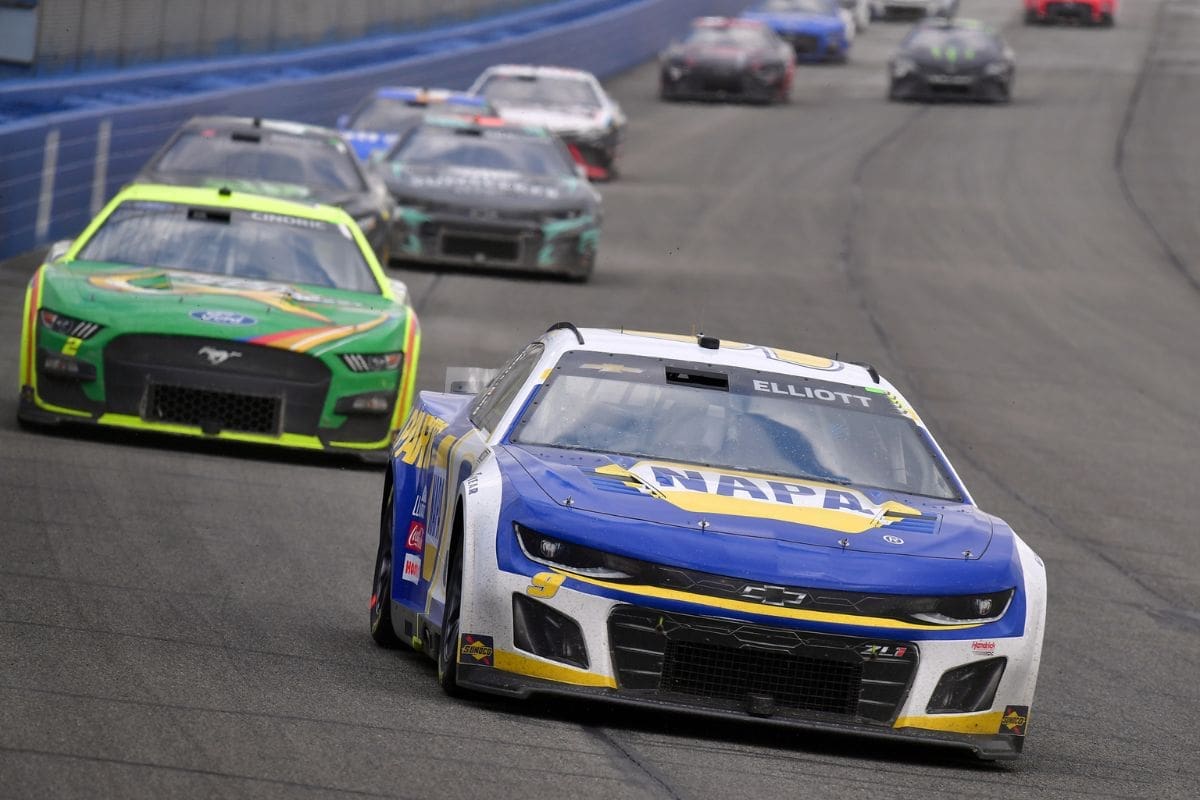End of NASCAR’s Golden Era: As veteran drivers like Denny Hamlin and Martin Truex Jr. prepare to retire, NASCAR stands at a crucial crossroads, ready for a transformation that could redefine its competitive landscape. The ascent of youthful talent, shown by drivers such as Kyle Larson and Chase Elliott, hints at a shift towards innovation and a broader appeal among diverse audiences. This generational shift not only raises questions about the future of race strategies but also challenges the very essence of what it means to compete at the highest level.
Key Highlights
- The retirement of Kevin Harvick and impending exits of veterans like Martin Truex Jr. signal a major shift in NASCAR’s competitive landscape.
- Young talents such as Kyle Larson, Chase Elliott, and Ryan Blaney are stepping up, reshaping the future of NASCAR and attracting a younger fan base.
- The rise of younger drivers is leading to new marketing strategies and sponsorship opportunities, enhancing NASCAR’s commercial viability.
- Veteran drivers’ extensive knowledge and experience will give way to innovative approaches as younger drivers take on leadership roles within teams.
NASCAR Drivers and Longevity
NASCAR drivers often defy conventional age-related expectations in sports, showing that with the right combination of skill, fitness, and experience, longevity in racing can extend well beyond the typical peak years seen in other athletic disciplines. Unlike many athletes who peak in their twenties or early thirties, NASCAR drivers can remain competitive into their forties and even fifties. This phenomenon can be attributed to the unique demands of the sport, where mental acuity, tactical thinking, and emotional resilience often outweigh sheer physical ability.
The physicality of racing has evolved, with rigorous fitness regimens now integral to a driver’s routine. Endurance, strength, and agility are critical, as the demands of high-speed competition place tremendous strain on the body. Additionally, the mental aspect of racing—crafting strategies, adapting to changing conditions, and maintaining focus under stress—benefits considerably from experience. Veteran drivers accumulate invaluable knowledge, allowing them to drive races with a level of insight that younger competitors may lack.
As the sport progresses into a new era, it remains important to recognize the contributions of these seasoned drivers who have sustained their careers against the odds. Their ability to compete effectively at an advanced age not only serves as an inspiration to aspiring racers but also challenges the traditional narrative surrounding athletic longevity.
Veteran NASCAR Drivers Nearing the End of Their Careers
As the landscape of NASCAR changes, veteran drivers stand at a key moment in their careers, with several nearing the end of their time in competitive racing. This transition marks the end of an era characterized by remarkable achievements and groundbreaking developments in the sport.
The recent retirement announcement from Kevin Harvick, a stalwart of the Cup Series, emphasizes the shifting dynamics within the league. Harvick’s tenure, particularly his partnership with crew chief Rodney Childers in the No. 4 car, has been marked by notable successes, including their championship victory in 2014 and multiple Championship 4 appearances. Yet, as the sport shifts into a new era, his departure signals not just the loss of a formidable competitor but also the ending of a chapter dominated by established names.
The decade from 2011 to 2020 witnessed an unprecedented variety of champions, with nine different drivers claiming the title. This scattering of victories reveals a more competitive landscape but also highlights the increasing difficulty for veterans to maintain dominance. As teams like Stewart-Haas Racing (SHR) experience a decline in their championship-contending capability, the context for these veteran drivers becomes even more challenging.
Martin Truex Jr. and Kyle Busch’s Current Status
The imminent retirement of Martin Truex Jr. not only signifies a change in his career but also reflects broader shifts within NASCAR. Truex, at 44 years old, has announced he will retire from Cup racing after the 2024 season. His decision, long considered, marks the end of an era for a driver celebrated for his 2017 championship with Furniture Row Racing. As he prepares to hand over the reins of the No. 19 car to Chase Briscoe, Truex can now turn his attention to pursuits such as fishing, leaving behind a legacy of resilience and skill.
Conversely, Kyle Busch, now 39, remains in the competition but faces challenges that complicate his path. Although Busch has displayed flashes of brilliance, including multiple championships in the previous decade, his recent shift to Richard Childress Racing (RCR) has not revived his competitive edge. Compounded by difficulties with the Next Gen car, which have hampered his performance, Busch’s quest for another championship appears increasingly intimidating. While he possesses the experience and talent to potentially reclaim his former glory, the clock is ticking, and the window for success narrows.
Denny Hamlin’s Current Situation and Future
Steering through the twilight of his career, Denny Hamlin stands at a significant crossroads, with 2024 presenting a compelling opportunity to ultimately secure the championship title that has long eluded him.
As he approaches the age of 44, Hamlin has shown remarkable resilience and competitiveness, managing to keep pace with the rising talent of younger drivers. However, the demands of his diverse commitments, including the management of 23XI Racing and his successful podcast, weigh heavily on his racing future.
- Performance Consistency: Achieving a balance between speed and reliability on the track will be fundamental for positioning himself as a serious contender for the championship.
- Strategic Decision-Making: Leveraging years of experience, he must make astute decisions during races, particularly regarding pit stops and race strategy, to capitalize on opportunities.
- Team Dynamics: Fostering a collaborative environment within his racing team will be significant, as synergy can improve overall performance and mitigate the stress of his impending retirement.
Rising Young Talents and Future of NASCAR
Amidst the backdrop of seasoned competitors such as Denny Hamlin, a new generation of NASCAR drivers is emerging, assured to redefine the landscape of the sport with their dynamic skills and relentless ambition. This fresh wave of talent, including names like Kyle Larson, Christopher Bell, and Ryan Blaney, signifies a crucial shift in NASCAR’s competitive narrative. The 2020 season, marked by Chase Elliott’s championship victory, indicated the dawn of a new era, where younger drivers are no longer mere understudies but formidable contenders.
Kyle Larson, at the forefront of this movement, has consistently shown his capacity to rise to the occasion. At 31, he has already secured NASCAR’s coveted championship, echoing the skill of legends like Tony Stewart. His path suggests not only a continuation of success but potentially another championship win in the upcoming 2024 season. As he competes under the prestigious Hendrick Motorsports banner, Larson shows the blend of talent and tenacity that younger drivers bring to the table.
Moreover, the emergence of these talents signals a gradual change in NASCAR’s identity, shifting from veteran dominance to a more diverse and competitive field. This evolution not only captivates existing fans but also appeals to a younger demographic, ensuring the sport’s relevance and vibrancy. As these rising stars carve their niches, they carry the promise of innovation and excitement, making the future of NASCAR a thrilling prospect for enthusiasts and stakeholders.
More Young Talents Shaping NASCAR’s Future
Numerous emerging drivers are not only enhancing the competitive landscape of NASCAR but also laying the groundwork for a vibrant future within the sport. As the veteran drivers gradually step aside, a new generation is ready to take center stage, displaying their skills and resolve. The rise of these young talents marks a crucial shift, ensuring that NASCAR remains dynamic and compelling.
- Ryan Blaney: As the defending champion, Blaney’s tactical insight with the Next Gen car has positioned him as a formidable contender. His ability to consistently secure wins highlights his potential to dominate in the years ahead.
- Christopher Bell: Though he has yet to capture a championship, Bell’s impressive performances suggest that he is on the brink of success. As veteran drivers like Denny Hamlin and Martin Truex Jr. approach the twilight of their careers, Bell’s role at Joe Gibbs Racing will be essential in leading the team into the future.
- Chase Elliott and Others: Alongside Bell, the likes of Tyler Reddick, Chase Elliott, Noah Gragson, and Ty Gibbs are emerging as key players. Their talent and tenacity could greatly alter the path of NASCAR, making them crucial to the sport’s evolving narrative.
News in Brief: End of NASCAR’s Golden Era
The impending change within NASCAR, marked by the retirement of veteran drivers, signifies a crucial moment for the sport. As seasoned competitors like Denny Hamlin and Martin Truex Jr. prepare to depart, the emergence of young talents such as Kyle Larson and Chase Elliott indicates a redefined competitive landscape.
This generational shift not only promises groundbreaking strategies and heightened engagement but also aims to attract a broader and more diverse fanbase, ultimately shaping the future of NASCAR.
ALSO READ: NASCAR Drivers Who Broke Their Winless Drought in 2024: The Year of Epic Comebacks!




Nascar ended a long time ago. When France took over NASCAR it went down hill fast. It will never be good again as long as the France family has anything to do with it.
Your article contained valid points with regard to the aging NASCAR drivers and greats. I was surprised and disappointed when you named the up and coming younger drivers, that you completely left out William Byron. He’s won 3 races so far this year, including the prestigious Daytona 500. Very disappointing that you didn’t include William Byron in your article. Sincerely, Mrs. Meggie Ulrich, San Diego, CA